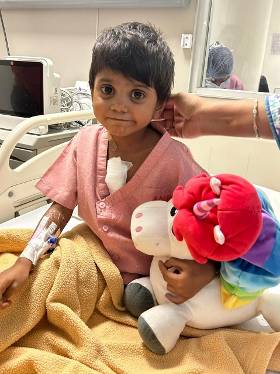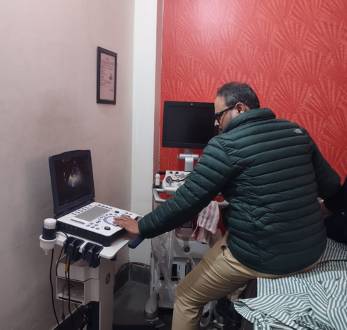Heart Disease in India: Current Scenario and the Way Forward Congenital
July 26, 2024 | Contributed by Dr Deepak Thakur
Congenital heart disease (CHD) is a critical public health issue in India, with significant morbidity and mortality rates. CHD, defined as structural or functional abnormalities of the heart present from birth, affects nearly 1 in 100 newborns in the country. This translates to an estimated 240,000 babies being born with CHD in India every year.
The Current Scenario
 Congenital Heart Disease is a critical public health issue in India
Congenital Heart Disease is a critical public health issue in India
The burden of CHD in India is staggering. It is the leading cause of birth defect-related deaths, accounting for nearly 10% of all infant deaths. Many children born with CHD do not survive past their first year without timely and appropriate medical intervention.
Access to quality care remains a major challenge, particularly in resource-constrained settings. India faces a severe shortage of pediatric cardiac care facilities and trained specialists. There are only about 600 pediatric cardiologists and 120 pediatric cardiac surgeons serving a population of over 1.3 billion. The majority of these specialists are concentrated in urban tertiary care centers, leaving large swaths of the country underserved.
Treatment costs pose another significant barrier. The average cost of corrective heart surgery in India ranges from ₹1.5 to ₹5 lakhs ($2,000 to $7,000), well beyond the means of most families. Even with government insurance schemes, out-of-pocket expenses can push many households into catastrophic debt or poverty. A few children heart foundations in India help with the financial cost of treatment for families who cannot afford, but there are not many.
As a result, less than 20% of children born with CHD in India receive the care they need. Tragically, nearly 25-30% of affected children die before their first birthday, often from preventable causes.
The Way Forward
To address this critical public health challenge, a multi-pronged approach is necessary. Key focus areas include:
 Increased workforce is essential for improved peditaric cardiac care
Increased workforce is essential for improved peditaric cardiac care
- Expanding Infrastructure and Workforce
Increasing the number of pediatric cardiac care centers, especially in underserved regions, is paramount. This requires strategic investment in infrastructure development and capacity building. Additionally, training doctors in pediatric cardiologists, cardiac surgeons, and allied healthcare professionals is essential to expand the specialized workforce.
- Enhancing Affordability and Access
Improving financial risk protection for CHD treatment is crucial. Strengthening and expanding public insurance schemes, like the Pradhan Mantri Jan Arogya Yojana (PMJAY), can help reduce out-of-pocket expenses for families. Introducing cost-effective surgical techniques and innovative financing models, such as crowdfunding and public-private partnerships, can also improve affordability. Increased number of Foundation working for children that facilitate access to diagnostic and treatment services can also greatly help.
- Strengthening Early Diagnosis and Referral
Integrating routine screening for CHD into existing maternal and child health services can enable earlier detection. Equipping primary and secondary care facilities with the necessary tools and training to diagnose and refer complex cases can also improve care-seeking and timely intervention.
- Fostering Awareness and Community Engagement
Promoting public awareness about CHD, its symptoms, and the importance of early treatment is key. Engaging with local communities, healthcare providers, and policymakers can help address stigma, cultural barriers, and misconceptions surrounding the condition.
- Enhancing Data and Research
Improving data collection, monitoring, and research on CHD epidemiology, treatment outcomes, and the socioeconomic impact can inform evidence-based policymaking and resource allocation. Multicenter collaborations and the establishment of national registries can strengthen the evidence base.
Promising Initiatives and the Road Ahead
In recent years, there have been some promising initiatives to address the CHD challenge in India. The Indian government’s National Health Mission has recognized CHD as a priority area, leading to the launch of the Rashtriya Bal Swasthya Karyakram (RBSK) program. RBSK aims to screen all children from birth to 18 years for various health conditions, including CHD, and provide free services.
While these efforts are commendable, much more needs to be done to ensure that every child born with CHD in India receives the care they deserve. Sustained political will, collaborative efforts, and a comprehensive approach are necessary to tackle this pressing public health challenge.
By prioritizing investments in healthcare infrastructure, workforce development, financial protection, and community-based interventions, India can work towards ensuring that no child’s life is cut short by a treatable heart condition. There is a need for more number of children heart foundations in India that can work alongside the Government and hospitals to make diagnosis and treatment more accessible. With a renewed focus and concerted action, India can pave the way for a future where congenital heart disease is no longer a leading cause of preventable deaths among its children.
Dr Deepak Thakur, Senior Consultant, Pediatric Cardiology, Paras Hospitals, Gurugram ,

